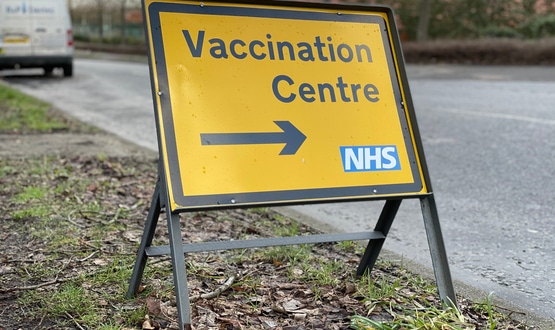Another view: Of partnership working
- 26 September 2019

This month, our resident GP columnist looks at partnership working and the rise of Primary Care Networks (PCNs).
Healthcare delivery in primary care is more cost effective in terms of overall outcomes, and this is partly because of the partnership and generalist models it operates.
If you therefore wish to shift work left to do more with less, we need primary care to step up and offer a consistent, high-quality and measurable service, while reducing its variation and inequalities.
Rise of the Primary Care Networks
To some extent, primary care needs to join up, standardise and work at scale, but not get so big and bureaucratic as to lose its lean productivity. Hence the rise of the primary care networks (PCNs).
If you accept this, you come to a few conclusions: that you need good data to measure demand, activity and outcomes, and that you need tools that aid a deep understanding of your patients and clinicians behaviour, to promote behavioural change to drive consistency.
It is also clear to some that primary care needs more resource to free up capacity to deal with this extra work. This is why the PCN directed enhanced service (DES) has offered money to incentivise the hiring of new staff. Given there aren’t enough GPs or nurses, these staff are intended to be allied health professions (AHPs) of various sorts.
Seeking to work together
While in some areas practices are merging, this isn’t happening everywhere – some are just seeking to work together. In many cases, due to geography, there is concern that shared staff will spend more time travelling that seeing patients. As an aside, I believe we might be about to see an explosion of video exam booths to enable staff to work across large areas.
The other issue with shared staff is they don’t necessarily always feel that they belong to the practice and the practice don’t always embrace them as one of their own. If you divide their time on a fair share basis, some practices may only be entitled to half a day a week – which isn’t really enough time to get anything done, or make a significant impact into the GP’s workload.
Sharing back-office, however, can be much more productive and easier to implement, while making clinicians’ lives better and help outcomes. I’ve mentioned in previous columns that my PCN jointly employed an IT support trainer. During his time with us, not only did he do a lot of training, he also looked to standardise some of our systems and processes.
He was also available to help project-manage and implement some innovative IT solutions, a role that can be missing within a practice and isn’t – in my experience at least – done well at commissioning support unit (CSU) level.
Getting onto the same system
To deliver shared back-office services and make them productive, primary care networks need to think about their IT infrastructure and systems.
In my area, practices are on the same clinical system, but I know in other areas that this isn’t the case. I suspect the GP IT Futures program is in some way trying to break the monopoly of the existing clinical suppliers.
However, now may be the time for PCNs to collectively choose to go onto the same one, to allow them to standardise training and enable staff to easily work across multiple sites. Now is not the time for a huge fragmentation within a network.
Yet it’s not just the main clinical system that could be standardised: there are a whole host of third-party add-ons we use that add value. It may be sensible for PCNs to look at what software they’re using and at least agree to use the same – perhaps purchasing in bulk and getting a discount?
Joining up the infrastructure
Hardware and infrastructure are also important. Locally we are all on one large network, but this isn’t the case in all parts of the country. Being on the same network means I can sit at any desk, log on to any system, print to any printer, access my files and generally work at any location in my PCN, without the hassle of VPN sessions or similar.
Primary care networks should be approaching IT suppliers to think about how they might join up their IT infrastructure. Maximising the use of voice over IP (VoIP) conferencing, facilitating video calls and such would be useful. A lot of PCNs have a lot of meetings, so travel time can be a huge issue for some. I don’t really feel that the NHS has grasped the benefits of online meetings.
The clinical systems also need updating to cope with members of staff who work across multiple practices. At the moment we have a medicines management team person who comes in a couple of days a week and logs into our system. She then goes to another practice and logs into theirs. In theory, she could sit in a remote office and log into both systems in turn.
In her current role, it’s easy to work on one surgery’s issue for a day, then move on to the second surgery the next day. In some of the examples of new roles shared across practices I’ve mentioned, it would make sense to work on multiple practices’ patients at the same time; for example, working on a shared inbox of patient requests or results or letters.
Partnership working
Working in time-order or urgency across multiple practices might make more sense than spending working on each in turn. For example, there might be something urgent in practice three that doesn’t get looked at until Wednesday. But currently, there is no way a user can log on to more than one practice at the same time.
The master plan appears to be to push targets at a PCN as a whole and drive the member practices, if they choose not to merge, to work ever closer together. To aid this, we need the ability to dynamically search and report across multiple practices from central locations.
We need a really reliable and robust way of sharing and implementing templates, protocols and the like to get all staff doing the same. EMIS were about to launch something called resource scheduler, which is needed now more than ever.
There is lots of work to be done!





1 Comments
Interesting article Neil. I agree fragmentation would be very difficult and probably not as cost effective? The example of hands on IT Project support feels intuitively the right one across PCNs. Perhaps more than one PCN could have the same person to optimise value.
Comments are closed.